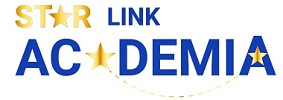Navigating the 2025 Job Market Jungle: Why a Killer Cover Letter Is Your Survival Kit
Picture this: You’ve polished your resume to a mirror shine, hit “apply” on 50 job postings this week, and… crickets. No callbacks, no interviews, just the echo of your own frustration bouncing off the walls of your home office. Sound familiar? If you’re job hunting in November 2025, you’re not alone. The job market isn’t just tough—it’s a wild, unpredictable beast, fueled by economic whiplash, AI overlords, and a cocktail of global curveballs. But here’s the plot twist: In this chaos, your cover letter isn’t some outdated formality. It’s your machete, slicing through the noise to land you that dream gig.
As a job seeker today, you’re up against odds that feel rigged. Let’s break down the madness—and why ditching the generic “Dear Hiring Manager” snoozefest could be your game-changer.
The 2025 Job Market: A Perfect Storm of “What the Heck?”
Forget the rosy headlines about a “booming economy.” For millions of Americans, the job hunt feels like a recession rerun, complete with ghosted applications and layoff lottery tickets. Consumer sentiment has tanked to near-record lows, with over half of working folks sweating bullets about job security as big-name companies slash roles left and right. Why? Blame it on a toxic brew of factors:
- Layoffs on Steroids: Tech giants and beyond are trimming the fat—think thousands of pink slips in sectors like mining and oil extraction alone, with ripples hitting everything from retail to finance. Inflation’s stubborn grip isn’t helping; it’s squeezing hiring budgets while jacking up living costs, leaving employers playing defense.
- AI Eating Your Lunch: The Future of Jobs Report 2025 paints a dystopian pic: Tech disruptions aren’t just automating grunt work—they’re reshaping entire industries amid economic volatility and geopolitical drama. Sure, AI can scan resumes in seconds, but it’s also sparking anxiety over skills gaps. If you’re not fluent in prompt engineering or green tech, good luck standing out.
- The Ghosting Epidemic: Hiring’s slowed to a crawl, thanks to post-COVID over-hiring hangovers and a shrinking labor pool—unemployment dipped to 4.1% in recent months, but only because folks are dropping out of the rat race altogether. Add in federal shutdowns delaying key job data (hello, uncertainty!), and you’ve got a market where applications pile up like unread emails.
The result? Fierce competition for fewer openings. Resumes get buried under applicant tracking systems (ATS) that couldn’t care less about your passion for problem-solving. Enter the cover letter: Your chance to inject soul into a soulless process.
Why Bother with a Cover Letter? Because Bland Won’t Cut It Anymore
In a sea of cookie-cutter resumes, a stellar cover letter is the flare gun that says, “Hey, I’m not just another PDF—I’m your solution.” Here’s why it’s non-negotiable in 2025:
- Beats the Bots: ATS filters 75% of resumes before a human even glances. But a tailored cover letter? It slips past with keywords, context, and that human spark—showing you’ve done your homework on the company, not just shotgun-blasted your app.
- Tells Your Story, Not Just Your Stats: Resumes are bullet-point brag sheets. Cover letters? They’re your TED Talk in 400 words. Weave in a quick anecdote—like how you turned a team crisis into a 20% efficiency win—and suddenly, you’re memorable. In an AI-saturated world, authenticity is the ultimate hack.
- Proves You Get the Gig: With skills shortages hitting hard (hello, climate tech and data ethics roles), a cover letter lets you bridge the gap. “I see your team’s tackling sustainable supply chains—here’s how my project at [Old Job] slashed emissions by 15%.” Boom. Relevance on steroids.
Skip it, and you’re just noise. Nail it, and you’re the candidate they remember when the shortlist forms.
Craft a Cover Letter That Converts: Pro Tips (and a Lifeline from the Pros)
Ready to level up? Start with these battle-tested moves:
- Hook ‘Em Early: Ditch “I’m writing to apply…” Open with a zinger: “When I read about [Company’s] bold pivot to AI-driven renewables, I knew my expertise in [Your Skill] could supercharge your mission.”
- Keep It Punchy: Three paragraphs max—problem you solve, proof via stories, passionate close. Mirror the job description’s language without copying it.
- Personalize Like a Boss: Research the hiring manager (LinkedIn is your friend). Name-drop their recent win or challenge.
But let’s be real: In this high-stakes game, even pros hit writer’s block. That’s where experts shine. At Starlink Academia, we’ve helped over 1.5 million clients—from fresh grads to C-suite climbers—craft resumes and cover letters that land interviews. Our team of native English-speaking writers, armed with advanced degrees and real-world chops, delivers custom, plagiarism-free masterpieces tailored to your industry. Whether you’re gunning for a tech startup or an academic role, we handle the heavy lifting so you can focus on slaying the interview.
Affordable, deadline-crushing, and backed by top-tier tools like TurnItIn for that flawless finish—it’s career rocket fuel without the burnout.
Your Move: Don’t Let the Market Eat You Alive
The 2025 job market is a gauntlet, but you’re tougher. Arm yourself with a cover letter that doesn’t just apply—it advocates. It’s not about begging for a job; it’s about proving you’re the upgrade every team craves.
Stuck on where to start? Head over to Starlink Academia today. Drop your details, pick your writer, and watch your application transform from meh to magnetic. Your breakthrough interview is one click away—why wait for the chaos to clear when you can cut through it now?
What’s your biggest job hunt headache right now? Drop a comment below—we’re all in this jungle together.
